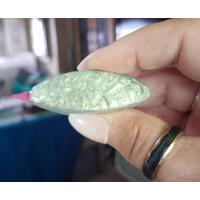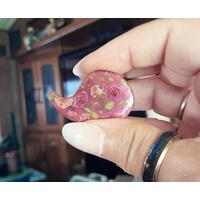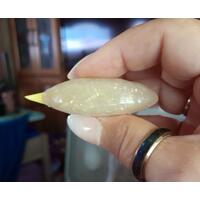About this Product
Tatting has been making a comeback and is one of the most enjoyable and relaxing needle art around today! Problem: tatting shuttles haven't changed much - until fairly recently.
This all-clay tatting shuttle is my own design, and each shuttle is individually created in a variety of shapes. This tatting shuttle consists of a special technique that has mica, alcohol ink, and inclusions, metal leaf(s) and took approximately 10 hours to create. What I like about these shuttles are the higher posts to add more thread, and are perfect for beading because there are no sharp tips or closed ends for the beads to get hung up in. Their posts are also higher, typically 1", to hold the pre-beaded thread. In addition, for those with arthritis, having the tatting shuttle a bit larger and thicker is much easier to tat with and hold on to. This is a huge shuttle! Awesome for weavers since it holds a lot of thread or yarn!
INCLUDED FREE: "Fish Hook" that helps to make picot and other stitches as well as thread a sewing machine.
Please Note: Because all tatting shuttles are individually handcrafted and the nature of the clay, you may find small irregularities which only enhance their unique and organic character. Screen resolutions do vary and, typically, the clay is much richer and has more depth in person.
RESOURCES: Muskaan M. has the largest collection of tatting resources around! It is a one-stop shop that includes the history of tatting and shuttles along with how-to's. It's an online Tatting Encyclopedia! https://tipsaroundthehome.blogspot.com/p/tatting-resources.html
TUTORIALS: For the absolute beginner, this is my favorite YouTube series: https://youtu.be/inFaSF3HUWM
RETAIL: $79.95
Cottonwood Cottage

Meet the Maker
As a creative individual, I have ventured into various professions throughout my career journey. Initially, I delved into the world of fashion, creating clothing for renowned musicians. Later on, I transitioned into being the proprietor of an advertising agency. Subsequently, I honed my skills as a proficient web and graphic designer. Notably, I have also ventured into the realm of literature, publishing a book named "Grandma's Drugstore." All in all, one could say that I possess a diverse range of talents and expertise. My upbringing was marked by the influence of my German great-grandmothers and my mother, who possessed extensive knowledge of various needlecrafts. Under her guidance, I learned a multitude of these crafts, although my attempts at mastering tatting with a shuttle proved to be less successful.
I started working with polymer clay about 25 years ago and it's been my favorite outlet for creating items with a modern twist. Since tatting has been making a comeback, I developed a method for enhancing metal (with a bobbin) as well as plastic (with a post) shuttles. This was no small feat as polymer doesn't like to stick to metal, and plastic melts during the curing process. It took several months before I could create the shuttles and each is either a faux stone or textured technique with color variances such as color shifts.
So, why specialize in tatting shuttles, you might wonder? Well, due to my own interest in giving tatting with a shuttle another go to make lacy, beaded jewelry, I wanted a cool shuttle. I mean, if you're going to go through the pain of learning tatting with a shuttle, you might as well have a GREAT shuttle. Too, tatting has been making a major comeback and I'm not the only one after an awesome shuttle no one else has.
I often work real stones and crystals into their design as well. I also developed a way to make it so the metal shuttles, in particular, could be worn as pendants. This works because it can be unclipped and tatted with vs. having the tip or hook get hung up in a purse. Recently, I have designed shuttles that are created using all clay using molds and templates I also designed. These tatting shuttles are especially good for beaded tatting thread because the post is taller and the entire shuttle is smooth.
My tiny (yet full) studio is in the corner of the bedroom of my and my husband's 5th wheel, which sits comfortably in a resort outside of Sedona, Arizona.
Please feel free to contact me with any questions, and thank you so much for stopping by!
~Shawna Nero Newton
Privacy Policy: Information will not be collected for the purpose of selling your data acquired through sales through Cottonwood Cottage at 989 S. Main Street, Suite A151, Cottonwood, AZ 86326.
Terms of Service: Product descriptions, information, and pricing online may not always be up to date and are subject to change without notice. Cottonwood Cottage reserves the right to end or refuse promotions, including discount codes, at any time.
Back to Shop: https://goimagine.com/cottonwo...

How it’s Made
The process of conditioning polymer clay can be done either by hand or by using a pasta machine. The duration of this process varies depending on the specific type and age of the clay. It is crucial to ensure that the clay becomes pliable enough for manipulation and to allow for the incorporation of other elements, such as colored chalk, mica powder, alcohol ink, and dried flower petals.
In the case of faux stone, which is considered the most intricate to create, a veneer is crafted using translucent, colored clay and various other components. The clay is then shaped into a block and sliced into extremely thin pieces using a tissue blade. These slices are subsequently placed on a foundation clay sheet.
When it comes to plastic-based tatting shuttles, the artist utilizes silicone molds to push the polymer clay into them, which is then gently removed. Alternatively, a template can be employed to cut the piece out from a veneer. To ensure strength and durability, the polymer clay is placed on a domed instrument on a ceramic tile for a minimum of one hour to cure.
For metal-based tatting shuttles, the clay is manually molded around the metal tatting shuttle, with the case embedded within it. This is because polymer clay does not adhere well to metal. As for all-clay tatting shuttles, the entire piece, including the higher post, is crafted by hand around a pre-cured clay base specifically designed by the artist.
The cured-clay tatting shuttle pieces are affixed to plastic shuttles using E600 glue and left to cure for 24 hours. Subsequently, each tatting shuttle undergoes a wet-sanding process using five different grades of sandpaper, starting from the coarsest to the finest.
To provide a robust and protective coating, UV resin is meticulously applied, or the shuttle is buffed or left in its natural state such as with dried flower petals in the clay.
Shop Policies
Privacy Policy: Information will not be collected for the purpose of selling your data acquired through sales through Cottonwood Cottage at 989 S. Main Street, Suite A151, Cottonwood, AZ 86326.
Terms of Service: Product descriptions, information, and pricing online may not always be up to date and are subject to change without notice. Cottonwood Cottage reserves the right to end or refuse promotions, including discount codes, at any time.
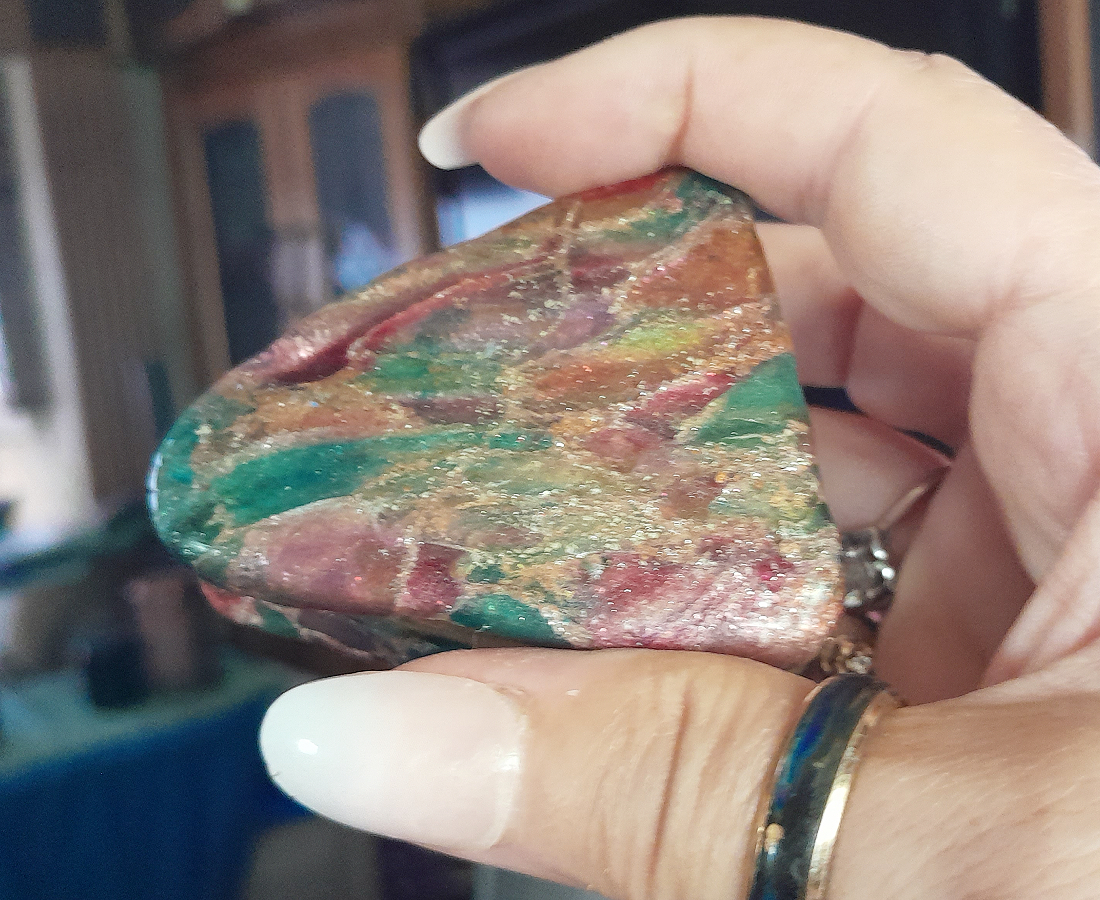

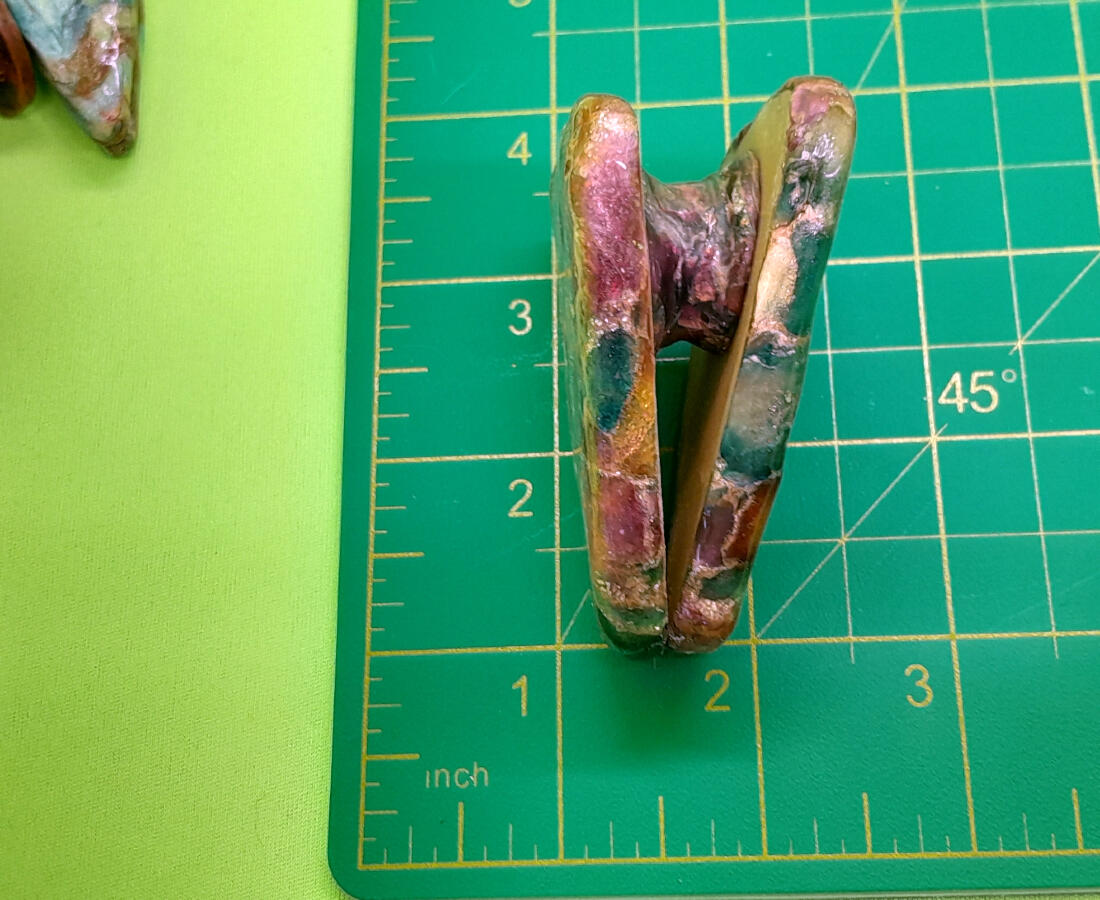
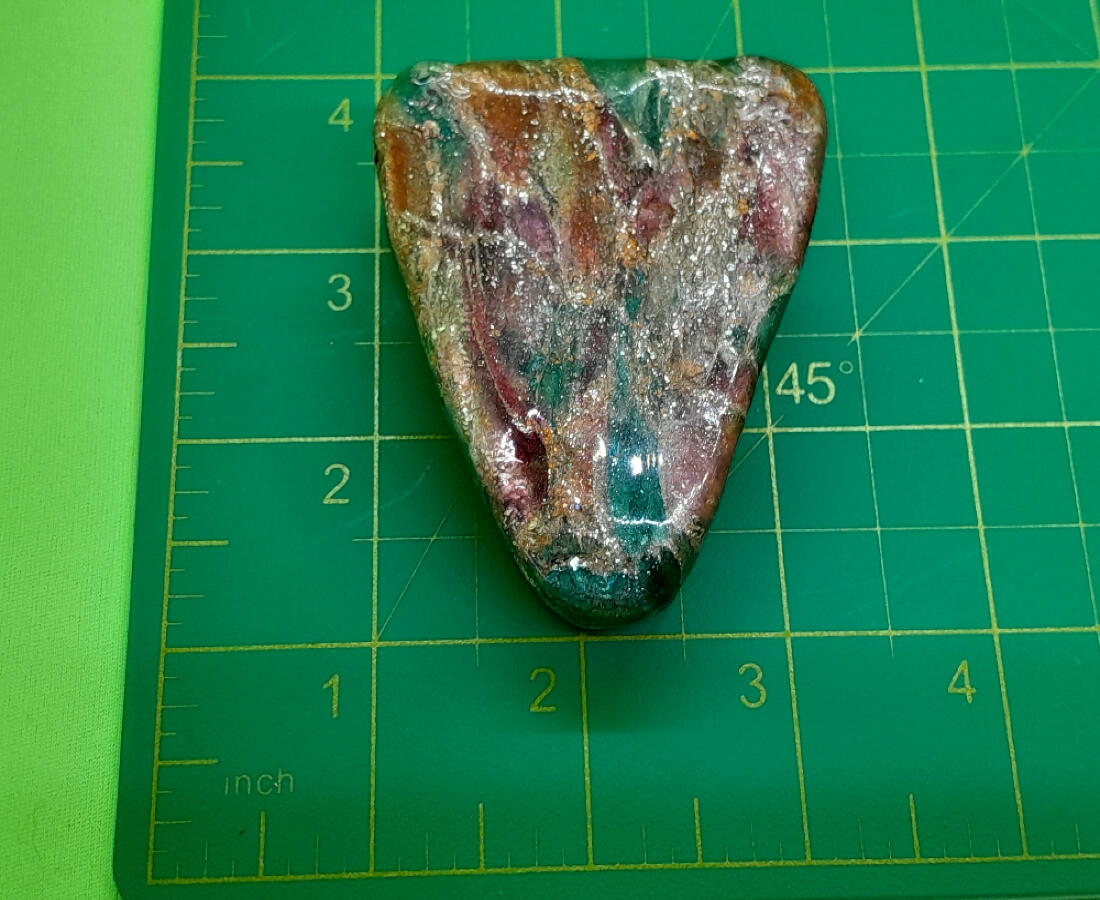

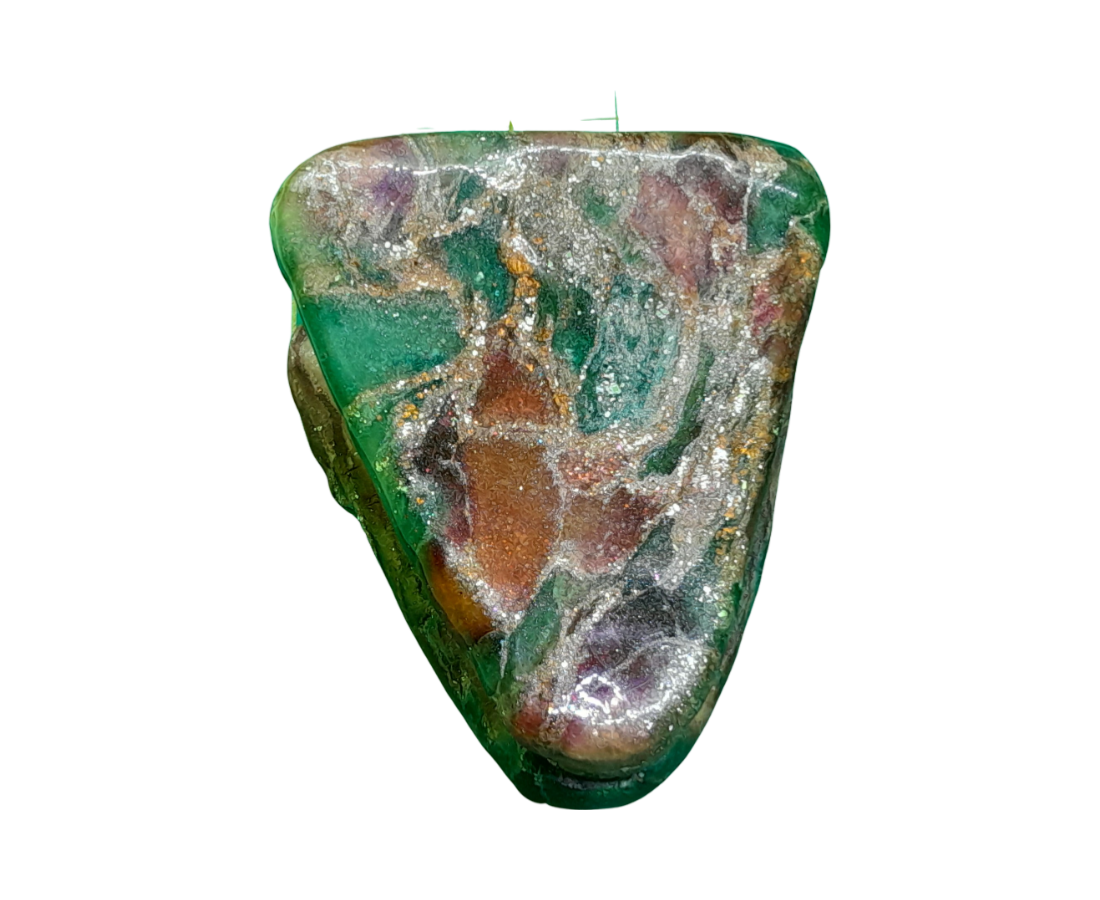







.j_1691840608.jpeg?t=1704425492)
